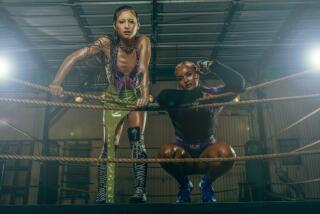NONFICTION : THE MANLY ART: BARE-KNUCKLE PRIZE FIGHTING IN AMERICA by Elliott J. Gorn (Cornell University: $24.95; 316 pp.).
For followers of 20th-Century pugilists such as Joe Louis, Rocky Marciano, Marvin Hagler and Mike Tyson, Miami University Prof. Elliott J. Gorn offers a look at such 19th-Century battlers as James (Deaf) Burke, Abraham Vanderzee, Jack Slack and Sam O’Rourke.
He weaves a portrait of early 1800s urban America--to prize fighting’s roots in its ethnic communities, to showdowns between neighborhood champions. Boxing, Gorn found, began as an urban working-class phenomenon, when Americans suffered from appalling job-related mortality, when half of New York City’s children died before age 6. In the era’s maleness, Gorn concludes, boxing made bloodshed “comprehensible.” Urban working-class men were inspired by a boxer “facing danger with courage . . . (returning) violence rather than passively accepting it.”
Gorn begins his readable history with the early 1800s American black, ex-slave Tom Molineaux, and ends it with the last bare-knuckle champion, John L. Sullivan.
More to Read
Sign up for our Book Club newsletter
Get the latest news, events and more from the Los Angeles Times Book Club, and help us get L.A. reading and talking.
You may occasionally receive promotional content from the Los Angeles Times.







